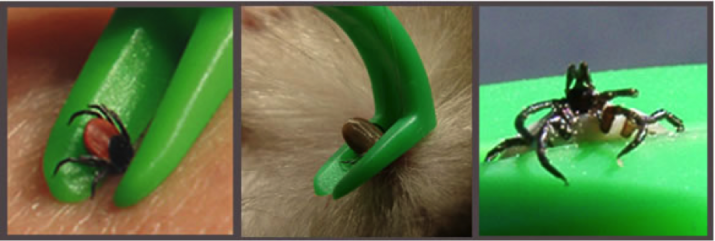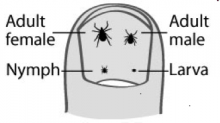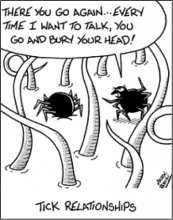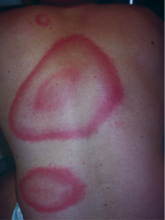
Raising awareness about tick-bourne infections in the UK
- Do you like going for walks around nature reserves?
- Do you ever go for a run around the park, or walk your dog in the local woodlands?
- Are you a wildlife-friendly gardener who likes to leave their garden au naturale?
- Does your job or research entail fieldwork based in grasslands, woodlands, heathland?
If the answer to any of these questions is yes, please read this short article about ticks and Lyme Disease. Tick populations are growing rapidly in the UK and as a result, so are the number of cases of tick-borne diseases. The chance of being infected is very small (<3000 cases per year in the UK), but it is not impossible, so here is a bit of information on what to look out for.
Key Facts
- Ticks are small arachnids, about the size of a poppy seed
- They feed on blood (commonly rodents, sheep, deer and humans if given the chance)
- Most common in woodland, scrub, heathland and grassland
- Active all year round, but mostly in the spring-summer
Ticks and humans
- Their bite is painless and they will feed anywhere on the body, particularly waistbands, socks, underarms and groin
- Chances of contracting an infection is very small (1,000 – 3,000 cases per year in the UK).
- Removal should be done gently using a tick remover tool with care not to leave the head in the skin.
Tick borne infections
- UK Diseases include: Borreliosis (Lyme); Babesiosis; Ehrlichiosis
- Lyme is the most commonly diagnosed. It’s a bacterial infection and treatable with antibiotics. There are three stages of infection and the earlier a diagnosis is confirmed, the easier it is to treat.
- Symptoms are wide-ranging and are easily misdiagnosed. If you, or someone you know has been bitten and experience any of the symptoms below (especially the rash), visit your GP as soon as possible.
Stage 1
- Early-localised infection occurring 3 days – a few weeks after a tick bite
- Flu-like symptoms
- Characteristic bulls-eye rash in about 50% of cases (shown above)
- 95% make a full recovery when treated with antibiotics in stage 1
Stage 2
- Early-disseminated, A few weeks – months after bite
- Joint & muscle pain / swelling / spasm
- Facial paralysis
- Impaired memory/ concentration
- Migraine
- Heart palpitations
- Meningitis (<10%)
- Encephalitis (<10%)
- Stage 2 can occur in those who were asymptomatic or who were not treated adequately with antibiotics during stage 1
Stage 3
- Chronic infection
- Months – years after tick bite
- Infection leaves the bloodstream and settles in the nervous system
- Meningitis/ encephalitis
- Paraplegia
- Chronic arthritis
- Neurological damage including psychosis, bi-polar, schizophrenia, memory loss
Preventing tick bites
- Wear light-coloured clothing
- There is some evidence that insect repellents can work…
- Cover bare skin and if in a tick-infested area, tuck trousers into socks / wear boots
- Check ALL of your body, and any family members regularly for ticks if you have been in areas where you suspect ticks are likely
- Remove any ticks ASAP with tick removers and make sure the head is not left in.
Do not:
- Burn, apply Vaseline, pull out with fingers or bite to remove a tick!
- This can cause the tick to regurgitate its stomach contents which could increase the risk of any infection.
- If tick removers are not available, gently remove using tweezers.
For more information you can visit any of these sites:
Borreliosis and Associated Diseases Awareness
British Association for Shooting and Conservation
Information and photos provided in this article were obtained from the above sites.


